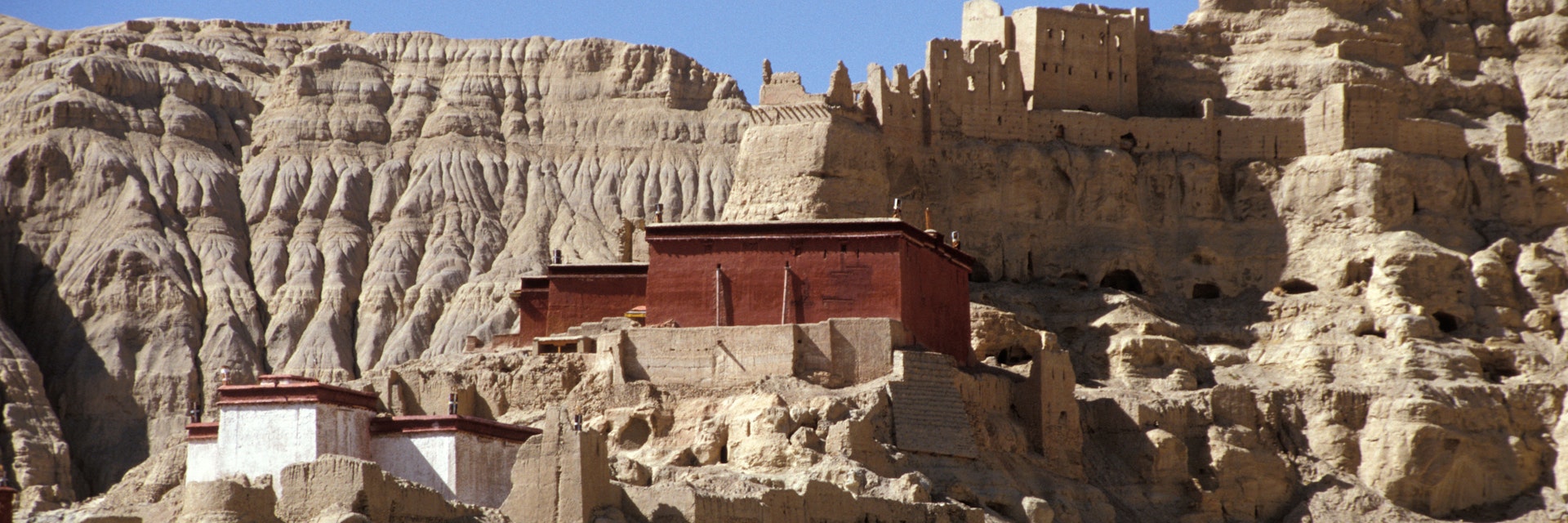This large building was constructed around 1470. The beautiful murals were repainted around 1630, shortly before the fall of the Guge kingdom. The original chapel door, with its concentric frames and carvings of bodhisattvas, elephants and the syllables of the 'om mani padme hum' (‘hail to the jewel in the lotus’) mantra in six panels, has survived and is also worth close inspection.
Inside the chapel, many thin columns support the chapel roof, similar to those of the neighbouring Lhakhang Karpo. By the main door are images of Chenresig (Avalokiteshvara), Green Tara and an angry eight-armed Namgyelma, with white Drölma and orange Jampelyang (Manjushri) to the right.
The statues that once stood in the chapel were placed towards the centre of the hall, not around the edges, and although only the bases and occasional disembodied head remain, the crowded feel to the space, the intense colours and the eerie silence combine to create a powerful atmosphere. The chapel was used as a barley store during the Cultural Revolution.
Although the wall murals have been damaged by vandalism and water leakage, they remain so remarkably brilliant that it’s easy to forget they are actually over 350 years old. On the left wall beside the entrance are the famous murals chronicling the construction of the temple: animals haul the building’s huge timber beams into place as musicians with long trumpets and dancing snow lions celebrate the completion of the temple. Officials stand in attendance (a Kashmir delegation wears turbans), followed by members of the royal family, the king and queen (under a parasol), Öpagme (Amitabha) and, finally, a line of chanting monks. The royal gifts frame the bottom of the scene.
Murals on the far right (northern) wall depict the life of the Buddha, showing him tempted by demons and finding enlightenment under the bodhi tree, among others. On the eastern wall are murals of eight stylised chörtens, representing the eight events in Buddha’s life.
The main deitiy in the chapel has very ornate toranas, decorated with birds and crocodiles, and topped with flying apsaras (angels). At the back of the hall, statues of the 35 confessional buddhas once sat on individual shelves; a handful of them still have bodies but all the heads have gone.
As you leave via the entryway, look for the photo of Tsaparang positioned in front of a faint mural map of the site.

